Museums
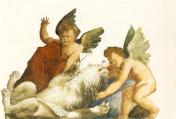 Trentino, the bridge between Italian and Nordic cultures, is a
harmonious combination of the different features of these two worlds.
The old towns, churches, castles and populated landscape are the essence of a
museum world in wich itineraries, atmosphere and sensations are intermingled.
The provincial exhibition centres, each featuring specialisations, condense the
centuries-old history of this land. Small and large buildings provide a moment
for thought and an opportunity to learn something new. Ethnography, technology,
modern art, archaeology, natural sciences, sacred art, folklore, contemporary
art and history of the land are displayed in 17 museums in continual evolution
and with ambitious programmes. This small land in the heart of Europe has
chosen culture to start the third millennium.
Trentino, the bridge between Italian and Nordic cultures, is a
harmonious combination of the different features of these two worlds.
The old towns, churches, castles and populated landscape are the essence of a
museum world in wich itineraries, atmosphere and sensations are intermingled.
The provincial exhibition centres, each featuring specialisations, condense the
centuries-old history of this land. Small and large buildings provide a moment
for thought and an opportunity to learn something new. Ethnography, technology,
modern art, archaeology, natural sciences, sacred art, folklore, contemporary
art and history of the land are displayed in 17 museums in continual evolution
and with ambitious programmes. This small land in the heart of Europe has
chosen culture to start the third millennium.
The Museum is located in various centres in the province and include Stenico
Castle in th Giudicarie, Beseno Castle, near Rovereto and Castel Thun in Val di
Non.
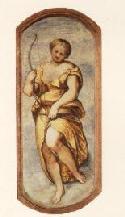 Buonconsiglio Castle preserves many fine collections, the first of which
was formed in the mid-19th century in the Civic Museum of Trento (1853).
Since they were moved to the castle in the 1920s, when the National Museum was
formed (1924), these collections have continued to grow. The medieval and
modern art collections are manuscripts, among which the famous 15th century
music codices and the collection of the musicologist Laurence Feininger, a
purple evangelistary (5thC) and the Gragorian Sacramentary (9thC). The Museum
preserves a large collection of paintings, sculptures from Carolingian period
to Rococo, furnishings, detached frescoes, majolica tiles, cinaware, prints and
drawings. Besides the numismatic collection, the archeological sections is also
very important and includes relics of special interest. Among these are
materials and wood from the Bronze Age, objects from the Iron Age and Roman and
Longobard times. The collection of Egyptian and Far Eastern art is also very
important. In Stenico Castle, the so-called Casa Vecchia rooms are furnished
with furnitures, paintings, steel weapons or fire-arms, as well as old domestic
utensils dating from 16thC to 19thC.
Buonconsiglio Castle preserves many fine collections, the first of which
was formed in the mid-19th century in the Civic Museum of Trento (1853).
Since they were moved to the castle in the 1920s, when the National Museum was
formed (1924), these collections have continued to grow. The medieval and
modern art collections are manuscripts, among which the famous 15th century
music codices and the collection of the musicologist Laurence Feininger, a
purple evangelistary (5thC) and the Gragorian Sacramentary (9thC). The Museum
preserves a large collection of paintings, sculptures from Carolingian period
to Rococo, furnishings, detached frescoes, majolica tiles, cinaware, prints and
drawings. Besides the numismatic collection, the archeological sections is also
very important and includes relics of special interest. Among these are
materials and wood from the Bronze Age, objects from the Iron Age and Roman and
Longobard times. The collection of Egyptian and Far Eastern art is also very
important. In Stenico Castle, the so-called Casa Vecchia rooms are furnished
with furnitures, paintings, steel weapons or fire-arms, as well as old domestic
utensils dating from 16thC to 19thC.
Modern and Contemporary Art Museum of Trento and Rovereto
The permanent collections include paintings and scultures from
Romanticism to modern times, with particular reference to 20thC and
Futurism art.
The museum is located in tree centers:
Trento. Palazzo delle Albere. Summer residence of the Prince Bishops built for
the Madruzzo Family in the mid-16th century. Largely frescoed with valuable
mural cycles by Marcello Fogolino. Restored in the 1970s.
Rovereto. Fortunato Depero Museum. Founded in 1957 by Roveretan artist, it
occupies a house in the medieval historic cente and contains important works by
Fortunato Depero.
Rovereto. Archives of the 1900s. Roveretan section specialised in the field of
historic-artistic research. Modern exhibition area containing futurist works of
Trentino public collections and various 20thC private donations.
Tridentine Museum of Natural Sciences
The museum is housed in Palazzo Sardagna (Trento). This building is enhanced by
the museum's displays producing a pleasent effect that accompanies the visitors
through the 21 show rooms where the most typical subjects of trentino's natural
landscape are exhibited.
The Museum collects and arranges natural history material of mainly alpine
interest. The displays describe the most significant
mineralogic/paleontological finds in the area and its geological history, with
special attention for the Dolomite area and the surroundings of the town of
Trento.
Apart from its main seat, the Tridentine Museum of Natural Sciences has
several centes of undisputed importance in various parts of Trentino.
Alpine Botanical Garden at Viote on Mount Bondone.
Lake Dwelling Museum at Molina di Ledro.
Arboretum of Arco
Climatology Observatory at Roncafort
"Julius Payer" Glaciology Centre at Mandron (Adamello)
Tridentine Diocesan Museum
The Museum is located in Palazzo Pretorio (Trento) and displays the diocese's
heritage of Sacred Art.
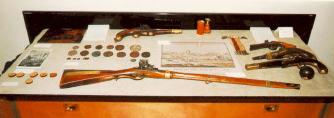 The Museum is located in Buonconsiglio Castle (Trento). The social, political
and economic history of trentino from the end of the 18th century to the second
postwar period is illustrated in the showroom in the new centre. Domuments,relics and some important works of art by
Trentino Artists are on display.
The Museum is located in Buonconsiglio Castle (Trento). The social, political
and economic history of trentino from the end of the 18th century to the second
postwar period is illustrated in the showroom in the new centre. Domuments,relics and some important works of art by
Trentino Artists are on display.
"Gianni Caproni" Air Museum (Mattarello, Trento)
The exhibition hall contain 20 planes, built between 1910 and 1980. Nine of
them are the only ones in the world. Among the most important pieces exhibited:
Guglielmo Marconi's radio which he used for the first communications by air
balloons and airships. The rib of Wright's plane that flew to Rome in 1909, E.
Forlanini's firts aviation engine built in 1887.
National History Museum of Alpine Soldiers (Doss Trento, Trento)
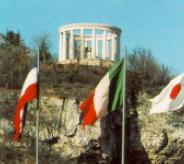 The building, an impressive construction in the style
of Roman castrum, made out of a former Austrian powder-magazine donated by
Comune of Trento to the Alpine Acropolis Foundation, is by the Milanese architect Serafini.
The interior plan of the museum consists of a nave, a crypt and eight niches on
each side of the nave. The Sacrarium of "Gold Medals for Military Valour of
Alpine Troops", from 1896 to 1945, is located in the crypt. Personal objects,
arms, photographs and documents of the most important episodes in the history
of the "Black Plumes" are exhibited in showcases inside the Museum.
The building, an impressive construction in the style
of Roman castrum, made out of a former Austrian powder-magazine donated by
Comune of Trento to the Alpine Acropolis Foundation, is by the Milanese architect Serafini.
The interior plan of the museum consists of a nave, a crypt and eight niches on
each side of the nave. The Sacrarium of "Gold Medals for Military Valour of
Alpine Troops", from 1896 to 1945, is located in the crypt. Personal objects,
arms, photographs and documents of the most important episodes in the history
of the "Black Plumes" are exhibited in showcases inside the Museum.
Civic Gallery of Contemporary Art of Trento
The Civic Gallery occupies some 800 sq.m of exhibition space divided into two
distinct areasand, not having a permanent collection at the moment, it operates
like Kunsthalle changing dispalys and conferences throughout the year.
The museum occupies the old Augustinian monastery of San Michele all'Adige
founded in the first half of the 12th century and later enlarged and rebuilt
several times.
The museum collections are exhibited in 40 rooms in an area of 2500 sq.metres
where nearly 9000 different exhibits are displayed featuring mountain rural
trcnology in its Trentino historical-ethnographic specificity.
Civic Museum of Rovereto
The Museum has sections on archeology, history, folklore, numismatics and
natural science.
History of War Museum (Rovereto, Trento)
The Museum is located in Rovereto Castle one of the most notable monuments of
military history made by Venetian military architets who, between 1417 and the
early 16th century, radically altered the previous stronghold of the
Castelbarco Family. In the inner courtyard are displayed some pieces of
artillery, a monument to sailors and a berlin formerly kept in the Vienna
imperial park. The exhibits are displayed in showcases illustating the
development of fire-arms and weapons used by various armies during the course
of this and previous centuries.
Civic Museum (Riva del Garda-TN)
The Museum is located in the Rocca di Riva, a historical stronghold built for
the people of Riva in the 12th century by Como master builders. The fortres was
altered several times over the centuries and, in the mid-19th century, it was
turned into a barracks by the Austrians. It has been designed to become an
organic centre of dumentation on the environment and the historical and
artistic development of the Upper Garda and Ledro area.
The Magnificent Community of Fiemme Museum and Picture Gallery (Cavalese-TN)
The museum begins with the most important documents of the Community of Fiemme,
original and antique copies of the first statutes of the valley rules,
displayed alongside less important exhibits of family life and tools and
implements of long ago. There are also many paintings from the Fiemme Art
School.
Ladin Museum of Fassa (Vigo di Fassa-TN)
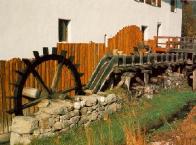
In this museum there is an ethnographic display giving a brief introdaction to
the traditional society in Fassa, showing the life and work of the community.
Civic Museum of "Geology and Ethnographic" (Predazzo-TN)
The Museum is divided into four sections, one on local ethnography an three on
geology (paleontology, petrografy and mineralogy). The geological collections
concern the Dolomites and in particular the Fiemme and Fassa area. The museum
extends to the surrounding countryside along the "Geological Path of Doss
Cappel" and about ten other geologic, mineralogic and petrographic itineraries,
the destination of guided excursions.
Museum of the Val di Sole Civilisation (Male'-TN)
The museum preserve, reconstruct and hand down the most important moments in
the lif e of this alpine valley: the means and ways of subsistence work, social
relationships, the forms of handicraft and the vastest possible collection of
tools in daily use farm and dairy equipment.
"S.Nuvoli" Museum of Postcards and Minor Collections (Isera-TN)
Besides Postcards, the museum collections include prints, posters, documents
and commemorative stamp books. There are over 20000 postcards subdivided into
19 subjects.
 Buonconsiglio Castle preserves many fine collections, the first of which
was formed in the mid-19th century in the Civic Museum of Trento (1853).
Since they were moved to the castle in the 1920s, when the National Museum was
formed (1924), these collections have continued to grow. The medieval and
modern art collections are manuscripts, among which the famous 15th century
music codices and the collection of the musicologist Laurence Feininger, a
purple evangelistary (5thC) and the Gragorian Sacramentary (9thC). The Museum
preserves a large collection of paintings, sculptures from Carolingian period
to Rococo, furnishings, detached frescoes, majolica tiles, cinaware, prints and
drawings. Besides the numismatic collection, the archeological sections is also
very important and includes relics of special interest. Among these are
materials and wood from the Bronze Age, objects from the Iron Age and Roman and
Longobard times. The collection of Egyptian and Far Eastern art is also very
important. In Stenico Castle, the so-called Casa Vecchia rooms are furnished
with furnitures, paintings, steel weapons or fire-arms, as well as old domestic
utensils dating from 16thC to 19thC.
Buonconsiglio Castle preserves many fine collections, the first of which
was formed in the mid-19th century in the Civic Museum of Trento (1853).
Since they were moved to the castle in the 1920s, when the National Museum was
formed (1924), these collections have continued to grow. The medieval and
modern art collections are manuscripts, among which the famous 15th century
music codices and the collection of the musicologist Laurence Feininger, a
purple evangelistary (5thC) and the Gragorian Sacramentary (9thC). The Museum
preserves a large collection of paintings, sculptures from Carolingian period
to Rococo, furnishings, detached frescoes, majolica tiles, cinaware, prints and
drawings. Besides the numismatic collection, the archeological sections is also
very important and includes relics of special interest. Among these are
materials and wood from the Bronze Age, objects from the Iron Age and Roman and
Longobard times. The collection of Egyptian and Far Eastern art is also very
important. In Stenico Castle, the so-called Casa Vecchia rooms are furnished
with furnitures, paintings, steel weapons or fire-arms, as well as old domestic
utensils dating from 16thC to 19thC.
 Trentino, the bridge between Italian and Nordic cultures, is a
harmonious combination of the different features of these two worlds.
The old towns, churches, castles and populated landscape are the essence of a
museum world in wich itineraries, atmosphere and sensations are intermingled.
The provincial exhibition centres, each featuring specialisations, condense the
centuries-old history of this land. Small and large buildings provide a moment
for thought and an opportunity to learn something new. Ethnography, technology,
modern art, archaeology, natural sciences, sacred art, folklore, contemporary
art and history of the land are displayed in 17 museums in continual evolution
and with ambitious programmes. This small land in the heart of Europe has
chosen culture to start the third millennium.
Trentino, the bridge between Italian and Nordic cultures, is a
harmonious combination of the different features of these two worlds.
The old towns, churches, castles and populated landscape are the essence of a
museum world in wich itineraries, atmosphere and sensations are intermingled.
The provincial exhibition centres, each featuring specialisations, condense the
centuries-old history of this land. Small and large buildings provide a moment
for thought and an opportunity to learn something new. Ethnography, technology,
modern art, archaeology, natural sciences, sacred art, folklore, contemporary
art and history of the land are displayed in 17 museums in continual evolution
and with ambitious programmes. This small land in the heart of Europe has
chosen culture to start the third millennium.
 The Museum is located in Buonconsiglio Castle (Trento). The social, political
and economic history of trentino from the end of the 18th century to the second
postwar period is illustrated in the showroom in the new centre. Domuments,relics and some important works of art by
Trentino Artists are on display.
The Museum is located in Buonconsiglio Castle (Trento). The social, political
and economic history of trentino from the end of the 18th century to the second
postwar period is illustrated in the showroom in the new centre. Domuments,relics and some important works of art by
Trentino Artists are on display.
 The building, an impressive construction in the style
of Roman castrum, made out of a former Austrian powder-magazine donated by
Comune of Trento to the Alpine Acropolis Foundation, is by the Milanese architect Serafini.
The interior plan of the museum consists of a nave, a crypt and eight niches on
each side of the nave. The Sacrarium of "Gold Medals for Military Valour of
Alpine Troops", from 1896 to 1945, is located in the crypt. Personal objects,
arms, photographs and documents of the most important episodes in the history
of the "Black Plumes" are exhibited in showcases inside the Museum.
The building, an impressive construction in the style
of Roman castrum, made out of a former Austrian powder-magazine donated by
Comune of Trento to the Alpine Acropolis Foundation, is by the Milanese architect Serafini.
The interior plan of the museum consists of a nave, a crypt and eight niches on
each side of the nave. The Sacrarium of "Gold Medals for Military Valour of
Alpine Troops", from 1896 to 1945, is located in the crypt. Personal objects,
arms, photographs and documents of the most important episodes in the history
of the "Black Plumes" are exhibited in showcases inside the Museum.
